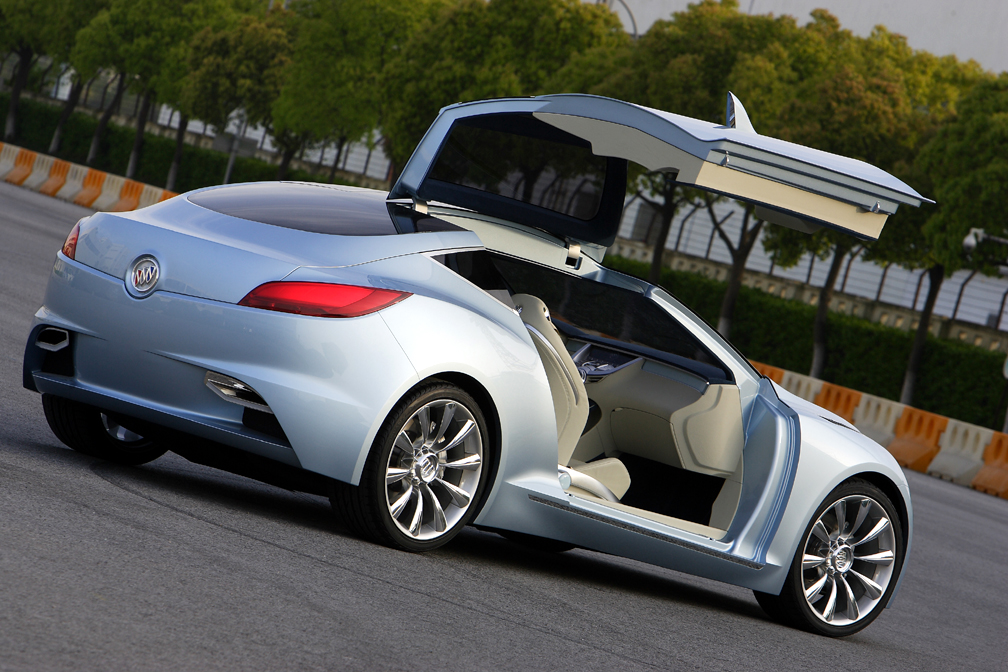
I just got back from a drive in the hills with the new Pontiac G8 GT, and I thought I'd share my impressions. First of all, the car looks great, as I've always felt. It's no boring family sedan. I've included the picture I was in from Automotive News at the Chicago show last year, but the red version is the one we have. I really feel like the GT model (which includes the powerful V8) should have xenons standard, but they won't even be offered. WTF!!! And of course the approach lighting feature includes the backup lights in the rear, which is something I hate.

Pontiac came last week to drop off the car, and we went for a ride. I drove it pretty much just on local surface roads, so didn't get a good idea of its real handling prowess at that point. The car seemed to have a bit more roll than I'd expected, and the brakes were pretty squishy, feeling pre-faded. It wasn't the best first impression, but the car certainly deserved another chance. I was handed the key again today, and I took it to my new favorite hot spot in the Santa Barbara hills.
When it came to the twisties, my impression changed. The car seemed to hunker down on more challenging, lower speed curves, taking them on with aplomb. The brakes seemed a little better today, though they don't inspire as much confidence and you might hope. It could be particular to this car. It's likely a press mule that's been flung around by Car and Driver, etc. Aside from that point, the car is certainly tossable. It feels lighter than it is, and although one of my colleagues said he didn't like the steering feel, I actually think it's tuned pretty well, with the right weight and good on-center feel. The extra body roll in more relaxed driving seems to be part of the tuning compromise that's likely been made for the American market. The suspension was very comfy, and soaks up speed bumps easily.
Up in the hills its rear drive nature came out, with the relatively easy ability to get the tail dancing. This was exaggerated even more by the touchy throttle tip-in, which can make it difficult to transition back onto the gas smoothly. At this point I was using the shiftable feature of the auto tranny, and as someone who drives a car with a DSG, it's pretty jarring to feel the limitations of a slush box in a car like this. In fact, the configuration of the autostick was not the best. When you first shift toward the manual gate (a bit too high-effort...hopefully they'll fix it by sale time) the car goes into sport mode. You actually have to make a shift to get it into manual mode, which to me defeats the purpose, since the whole point of manual mode is often to let you stay in the current gear longer when the situation calls for it. My R32's gearshift has a seperate position for sport mode, as it should.
Once you're into manual mode, though, it's a decent experience, with relatively quick shifts (for an auto). The quality of the experience is brought down a bit by the shape of the shifter, though, which is made more for an auto, and doesn't feel like it's meant for frequent shifting. This brings us to the issue of the lack of shifter paddles behind the wheel. While one might argue that these are a bit faddish, I did feel a sincere need for them, especially in the twisty sections and with that subpar shifter feel. And Pontiac has even offered them on the 4-speed Grand Prix GXP. C'mon Pontiac, pleeeeeease.
Okay, let's talk about the engine. It's great. Torquey whenever you need it, and it sounds superb, too. With a macho rumble around town (while still not too loud), it builds to a high-energy growl at speed, which was fun to listen to as it echoed off the hillsides. Anything that's lacking in the drivetrain I'd blame on the transmission. That tranny is tuned for the best possible fuel economy, and it seems to be very eager to upshift.
As we come to the interior of the car, you've gotta compliment those Aussies. They know how to do it, pretty much on the level of the Germans. It's about time GM tapped them not just for RWD platform engineering, but for car insides, too. Of course, with the Down Under design, there are a few curiosities you might have to get over. First of all, the window and mirror controls are on the center console, as opposed to the doors. This makes it easier to offer the car in both left- and right-hand drive, but many customers will be put off by this. I'd imagine that's mostly because of convention, and after a while it would feel pretty normal.

There are also some examples that don't seem to make as much sense. I've included a picture of the show car, because it illustrates nicely the meter screen at the top of the stack. It has digital meters for the battery charge and oil pressure, and they're both unchangeable. It seems weird, and it's possible GM could change this before showroom time. Either way, it's still a great looking interior, and it'll easily outshine anything the Pontiac has had before.
Okay, so it may seem like I have a lot of nits to pick with this car, but the fact is, it's fantastic, especially in light of GM's past. I personally believe, and I think most other enthusiasts would agree, that of the Detroit 3, GM is the one that's really getting their shit together. In my line of work, we tend to handicap brands a lot based on brand equity, and Pontiac certainly has an uphill battle ahead of it in that regard. But in my experience, this G8 is one car that can handle those hills.
Now if they'd only put a stick in the damn thing...



























